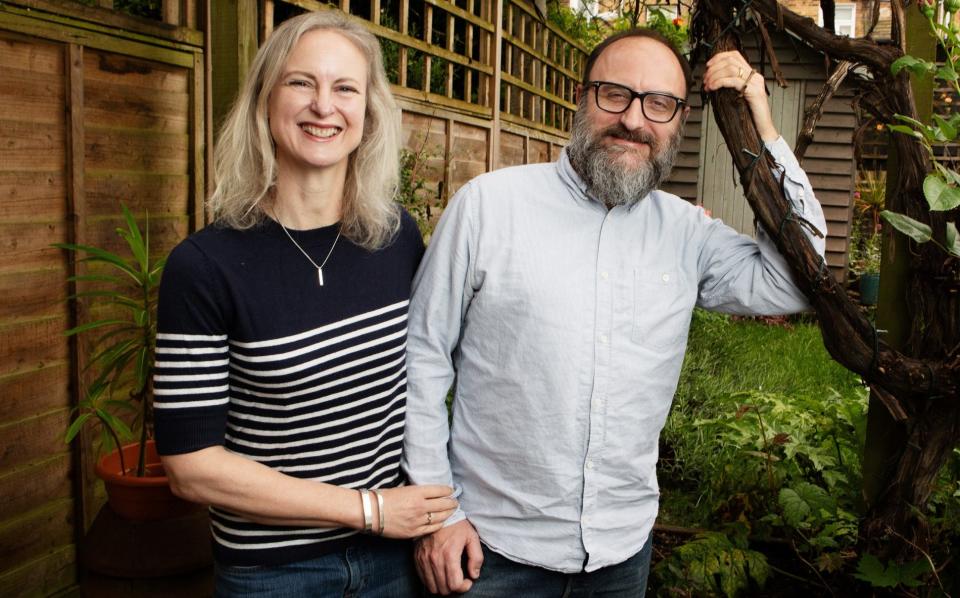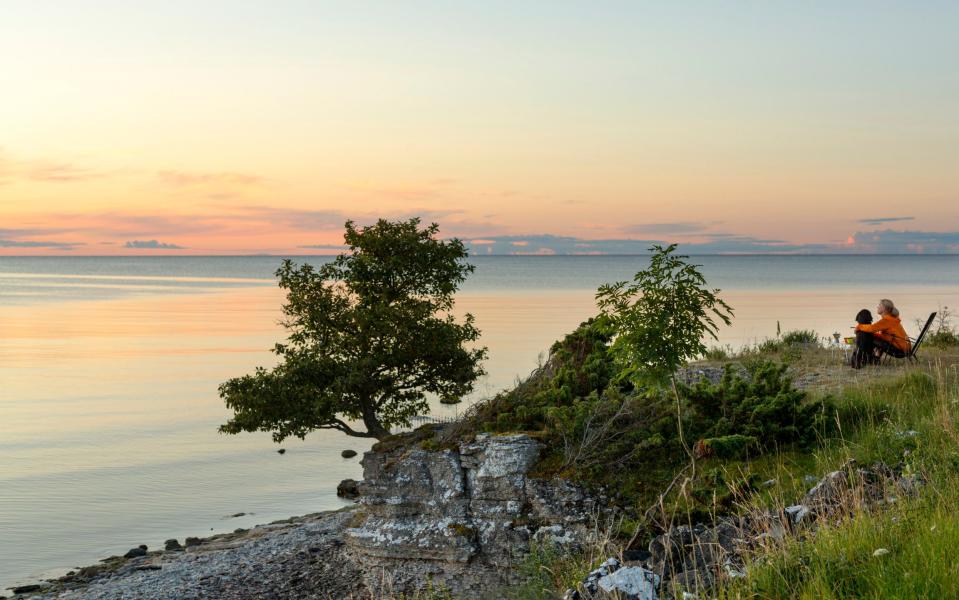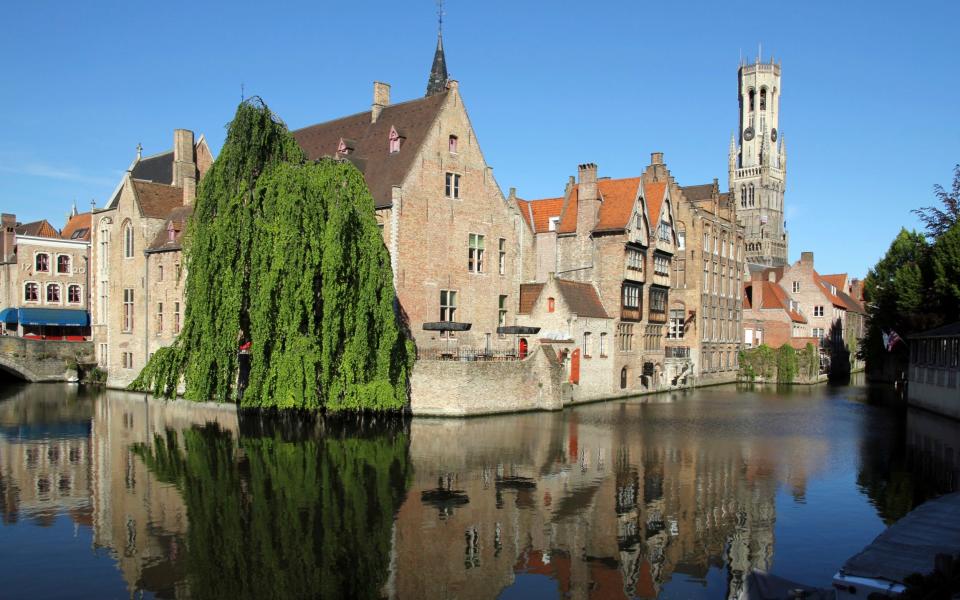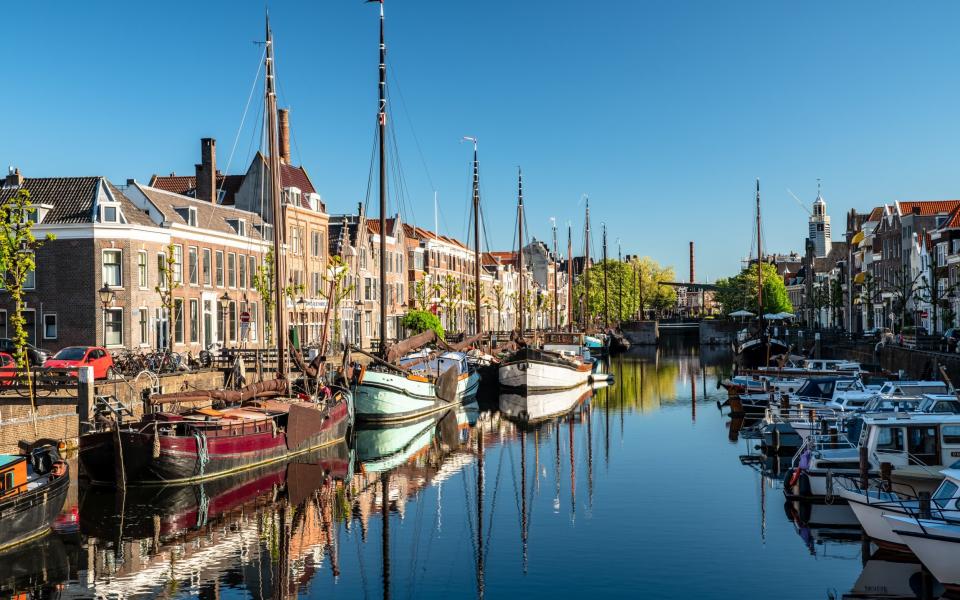Most people’s idea of packing for a summer holiday in Europe involves packing swimwear, shorts and plenty of sun cream into a case.
When she visits her holiday home in France, Lebby Eyres does all that – but she also packs wetsuits and walking boots.
Lebby, 53, and her husband Fred Guetin, 48, bought their 1780s stone house in the village of Orgelet, close to the French-Swiss border, back in 2011 as a family base close to Fred’s parents, who live in Burgundy.
Temperatures in Orgelet, 85 miles north of Lyon, reach a comfortable average of 24C in high summer while places like St Tropez hover at an average of 29C. “I love that there are four proper seasons,” Lebby said.
Traditionally when Brits buy property overseas guaranteed sunshine is at the top of their wish list.
But global warming is making life uncomfortable in many hot spots in southern Europe, with water supplies being shut off overnight in the golfer’s paradise of Sotogrande, Spain, due to water shortages, wildfires spring and summer in France and Spain, and floods in Venice, Italy. .
The realities of climate change mean that smart second home buyers need to start considering options further north as destinations where they can relax without such inconvenience.


Lebby, a freelance journalist, Fred, a TV producer, and their two teenagers still visit their €175,000 (£150,000) home up to four times a year. In the summer they can hang out at one of the beaches around the nearby Lac de Vouglans. Later in the year it involves crisp forest walks and in January and February, skiing in the Jura mountains.
Despite its latitude, over the past 13 years Lebby has noticed that the temperature in Jura is changing – heat waves are becoming more common, and the ski season is getting shorter. “But it never gets bad,” she said. “These stone houses were built to protect you from the cold in the winter and they also protect you from the heat in the summer.”
Even if the region has an average of 125 rainy days per year, that does not stop Lebby, who appreciates the cool environment and the greenery that surrounds him. “You just have to remember your rain gear,” she said.
Whether you’re looking for a traditional seaside hole-in-the-wall, a sophisticated city break or an island retreat to get away from it all, Northern Europe has a great selection of second home options for buyers who don’t fancy cramming themselves all summer long. .
Island life: Gotland, Sweden


This beautiful Baltic island is where film director Ingmar Bergman lived and worked. For Swedes it represents a timeless and wholesome retreat from the real world, with its sandy beaches decorated with dramatic rock formations, beautiful countryside, delectable pastel-painted houses, and a surprisingly sophisticated array of bars, beach clubs, and restaurants.
Think Ibiza, but with less hard partying organized holidays, and less sunshine.
In 12 years of selling property on Gotland, Sofia Erlandsdotter Dinneny of Home by Dean has only sold a handful of holiday homes to foreigners. “I think that’s changing, though,” she said. instead.
“Gotland has the most hours of sunshine in all of Sweden, it’s a bit milder than the rest of the country, but the average summer temperature is around 25C.”
Getting to Gotland is not for the fainthearted, which involves a flight to Stockholm followed by a three and a half hour ferry ride to Visby, the main town.
Most second-home buyers opt for houses, Dinneny said, and a three-bedroom property with a sea view would cost around £220,000. A view of the Baltic Sea would raise the cost to around £300,000.
Most owners offset costs by renting out their properties during the summer. A three-bedroom house would fetch around £1,000 a week in the summer. Winter selling is more difficult because it gets dark at around 3pm every day.
Although Gotland’s temperature remains comfortable all year round, climate change is not even affecting this location. Due to the lack of rain there is a shortage of water, and prohibitions on watering gardens or filling pools. In the long term, seawater desalination is being explored as a solution.
Culture of vultures: Bruges, Belgium


Known as the Venice of the north, Bruges is a stunning medieval city full of culture and history. The Unesco world heritage city is the perfect place for a stroll, to see landmarks such as the gothic Belfry of Bruges, the Basilica of the Holy Blood, as well as the quotidian splendor of the brick houses of Bruges.
It’s great for people watching, cafe hopping, really happening with excellent museums and galleries, and a changing gastronomic scene.
“It’s really authentic and we have plenty of really tasty restaurants as well as a nice nightlife,” said estate agent Wout Nechelput of Immax Immobilien. “It’s also very safe. We don’t have the problems that big cities have.”
It’s also easy to catch trains (Eurostar to Brussels and then a local train) which takes around three and a half hours.
In terms of weather, Belgium is much like the UK. The mercury rises to an average of 21C every August.
The Golden Triangle is the most expensive place to live in Bruges, in the heart of the city filled with palaces, churches and designer shops. Tourists flock to the area during the summer and December when the city’s Christmas markets are in full swing.
Nechelput suggests that shopping for a home on one of the city’s many canals is a more enjoyable and better value option. You could pick up a two-bedroom flat for around €450,000 or a three-bedroom house for between €700,000 and €900,000.
Based on past performance Bruges looks like a solid property investment. Prices have increased year-on-year since 2011, and although that growth stopped in 2023, prices have increased by 2.75pc in the past three months, according to property portal Immoweb.
Less encouraging for owners of second homes is that Bruges authorities have cracked down on holiday rentals to protect their tourism industry. Licenses are no longer issued to rent houses within the city’s ring road, Nechelput said. “They are very tough,” he said.
The best of both worlds: Rotterdam, The Netherlands


A three-hour train ride from central London will take you straight into the heart of the Netherlands’ second city.
Cool in every sense of the word, Rotterdam’s average temperatures peak at 22C in July and August and are a great choice for second home owners who enjoy city vibes.
Heavily bombed during the Second World War, the city has been rebuilt with modern wow-factor architecture, excellent museums and galleries, and a very efficient public transport system (metro, trams and water taxis) to get you around .
Remko Schrijver, owner of Re/Max Totaal Makelaars, says the best neighborhood to invest in right now is Katendrecht, a spit of land close to the town center surrounded by water on three sides. Once the city’s red light district, Katendrecht has been thoroughly cleaned up – King’s Cross style – and is now full of restaurants and bars.
“It’s a very up-and-coming field,” Schrijver said. “The city has spent a lot of money on improvements, and they are working on preparing a huge beach in the city, which will make it better.”
If you prefer more natural beaches Rotterdam can provide that too. A 40 minute metro ride will take you to Hoek van Holland – Rotterdam Beach. This wide expanse of sand, backed by sand dunes, is great for hiking or biking, beach volleyball, surfing, and just chilling.
Schrijver estimates that a two-bedroom apartment in Katendrecht would cost you around €400,000. House prices in the Netherlands have doubled since 2008, but a series of interest rate hikes in 2022 reversed price growth. Since the end of last year, however, prices have increased again, and a severe shortage of stock for sale means that buyers have to compete for the best homes.
If you want to pay for your holiday home when you are not in situ you will need to be careful with what you buy. “In the Netherlands apartment buildings have home owners’ associations, and they don’t like people renting to Airbnb,” Schrijver said.